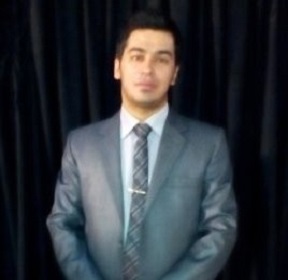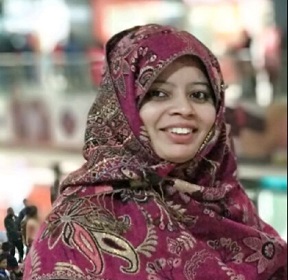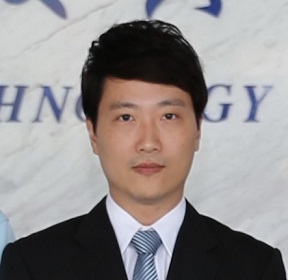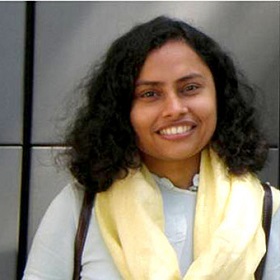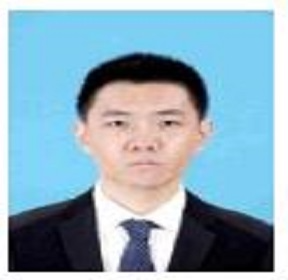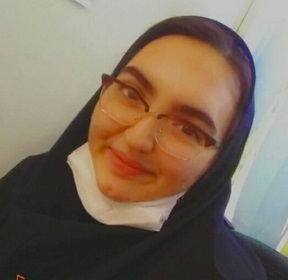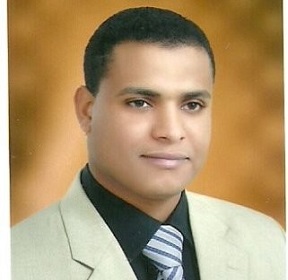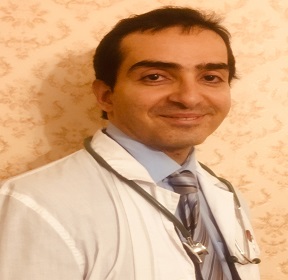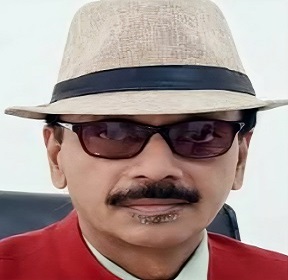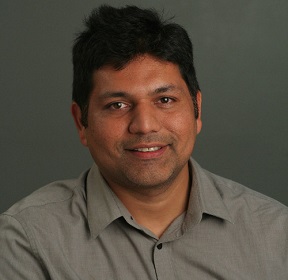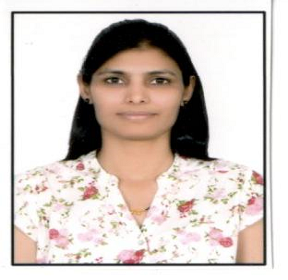Speakers
Sherko Nasseri
Kurdistan University of Medical Sciences IranTitle: The Lack of Fam83h Mediated Reduction of Wnt/?-Catenin Signaling Pathway and Expression Levels of Dental Mineralization Genes
Abstract:
Background: FAM83H has been identified as an essential gene for dental enamel formation and may be related to Wnt/β-catenin. Methods: levels of Fam20a, Dspp, Dmp1, Enam, Ambn, Sppl2a, Mmp20, Fgf10, and the mediators of Wnt/βcatenin pathway were measured in the dental root of both Fam83h-KnockOut and wild-type mice by using QPCR at 5,11 and 18 days after birth. The expression of Fgf10 and the mediators of Wnt/β-catenin were also evaluated in the skin of KnockOut and wild-type mice by using Q-PCR and also, The histology of hair follicles was compared. the Fam83h-KnockOut mice recruited in this study were confirmed by Sanger sequencing and western blot analysis. Results: Our results showed that Ambn, Mmp20, Dspp, and Fgf10 significantly reduced in Fam83h-KnockOut mice in the dental root, associated with marked reduction of CK1a, CK1e, and β-catenin expression in Fam83hKnockOut mice in the dental root. The Fgf10, CK1a, CK1e, and β-catenin were significantly decreased in the skin of Fam83h-KnockOut mice. In the absence of Fam83h, the accumulation of unemployed CK1a is expected to elevate the β-catenin destruction complex. The reduction of CK1e may also decrease the signaling of Dvl-1, leading to the suppression of the Wnt/β-catenin pathway. Simultaneous reduction of both mineralization genes and the Wnt/β-catenin pathway due to the absence of Fam83h has the potential to be related to the deficiency of dental formation and mineralization. Further, concurrent reduction of Fgf10 gene expression and the Wnt/β-catenin pathway may also affect the maturation of hair follicles as confirmed by histological examination. Conclusion: it seems that in the lack of Fam83h, dental mineralization is induced by simultaneous decrease of Wnt / β-catenin mediators and the mineralization-related genes, suggesting to act in a cumulative effect manner and probably behave as a multi-factorial trait.
Biography:
Sherko Nasseri completed Ph.D. in molecular medicine. Assistant Professor, from Kurdistan University of Medical Sciences, Iran. During my Ph.D. Thesis, I worked on the generation of Fam83h Knockout Mice by using the CRISPR/Cas9 method. The absence of Fam83h these mice has the scruffy cover, dry eye phenotypes, and also these mice were smaller than the same age normal mice. In continuation of this project, we found that the WNT/B-Catenin pathway decreased. The Fam83h gene has a high expression level in the gastrointestinal tract. Given all that has been said, it brings me a critical question that how does the fam83h gene play role in the gastrointestinal tract?
Sana Zahra
Purvanchal University IndiaTitle: Controlled Drug Delivery Based On Biocompatible Polymeric System
Abstract:
Several metallic macrobiotic actuators have been developed in the recent past, that have enabled the target-oriented advanced drug delivery system (DDS) for specific applications like cancer and gastrointestinal medication. The method involves the use of microbots or actuators that contain drugs and enable the controlled drug delivery at the site based on temperature, pH, light, electric, and magnetic field sensitivity. Other techniques were based on a single or combination of the above-mentioned criteria. The materials used for actuators or microbots either lack in delivering the required amount of drug or it does not remain inside the body for long. To overcome these problems, we are interested in providing better solutions to them by using suitable gripping techniques and polymeric systems for long-term exposure, with the controlled release of sufficient drugs at the site. The application of polymers showed that these responsive materials can overcome addressing limitations associated with metals used in a wide array of medical devices in the novel drug delivery system. Amphiphilic polymers have played a key role in the development of advanced drug delivery technologies by controlling the solubility, permeability, and stability of active ingredients. Amphiphilic polymers possess the ability to encapsulate hydrophobic drug molecules inside their hydrophobic core, hence increasing the aqueous solubility of the drug. The problem of controlled drug delivery of polymeric systems could be achieved by embedding nanofillers to it. The polymeric nanocomposites could form a tortuous path for the diffusion of drugs through it due to the impermeable particles in it, leading to enhancement of the controlled release rate. Various tortuous path models have already been developed that specifies the diffusion rate of solutes through such composites. The oral route is considered the most preferable route for drugs administration. While encapsulation could be done for the drug transport for the oral route, the solution to its retention lies in the spiked surface structure similar to the orchid that would be responsible for its attachment to the intestinal surface. So far literature reviews of such systems with techniques, process parameters, limitations, and the future scenario were analyzed and a plan for a suitable drug delivery system is made to overcome such limitations and provide better solutions to them. The challenges involve DDS synthesis, encapsulation, transport to specific sites, gripping power, polymer-drug interaction, and long-term exposure to cells. The overall work is to develop encapsulated, pH active, thermally assisted polymeric DDS that could be used orally, having biocompatibility and better attachment to cancer cells.
Biography:
Sana Zahra has done MSc in Applied Biochemistry in 2010 (Gold Medalist). With a better record in earlier studies and interest in research, she is trying to get back into research even after a long-term gap in her studies.
Arpit Sikri
Bhojia Dental College IndiaTitle: Regeneration in Prosthodontics – A Challenge?
Abstract:
The ultimate goal of prosthodontic treatments should be to regenerate the missing teeth together with the periodontal structures. Many prosthodontists have thought “I could have achieved a better treatment outcome if regenerative therapies were more readily available.” To date, prosthodontists have been managing missing teeth/alveolar bone by “replacement prosthodontics” using artificial materials such as dentures and dental implants. The recent development of stem cell-based regenerative medicine has introduced the concept of “regenerative prosthodontics” to our field, particularly in cases of missing teeth with severe alveolar bone resorption. This is mainly possible with the help of stem cells. Stem cells are undifferentiated biological cells that can differentiate into specialized cells and can divide to produce extra stem cells. They are originated in multicellular organisms. They may be embryonic or adult stem cells. The stem cells of the dental pulp are the mesenchymal stem cells (MSC). They are the most commonly used stem cells. However, bone marrow-derived mesenchymal stem cells are a commonly used cell type for utilization in cell-based regenerative approaches in prosthodontics. They help to build the bone structures of the craniofacial region, particularly the maxilla and mandible. Stem cell therapy is one of the most recent advances in the dental field. Its use establishes a 100% success rate. Thus, knowing its value is of prime importance. The presentation includes various challenges in relation to regenerative therapies being used as well as recent trends n regenerative prosthodontics.
Biography:
Arpit Sikri [BDS (Gold Medallist), MDS (Prosthodontics), PGDHM, DWCOI] is currently working as an Associate Professor & Post Graduate Teacher in the Department of Prosthodontics, Bhojia Dental College & Hospital, Baddi, Himachal Pradesh, India. He had earlier worked as Senior Resident in the most prestigious dental institute of the country i.e. Maulana Azad Institute of Dental Sciences, New Delhi, India. He had also worked as Senior Lecturer in Santosh Dental College, Santosh Deemed to be University, Ghaziabad (Delhi NCR) & Senior Lecturer in Sudha Rustagi College of Dental Sciences & Research, Faridabad, Haryana, India. He is the youngest dental surgeon of India to have completed his Post Graduate Diploma in Hospital Management from the National Institute of Health and Family Welfare (NIHFW, New Delhi), and that too with distinction. He has also been conferred with Diplomate Fellowship in the field of implantology by World Congress for Oral Implantology (WCOI), Tokyo, Japan. Throughout his academic career, he had been awarded gold medals being the Topper of the University, back to back. He has authored a book on “Oral Pathology” under Scientific Medtech publishers. He has to his credit around 28 books under Lambert Academic Publishing (LAP) and more than 100 national as well as international publications in various reputed journals. He is the Editor of Web med Central, Associate Editor of Current Dental Research Journal, and Assistant Editor of Asia Pacific Dental Journal & I-Dentistry journal. He is on the panel of various national and international journals as an editorial board member. Apart from this, he is also an active reviewer for various journals. He is actively associated with various associations namely IPS, IDA, IDRR, AHA, etc.
Daniela Capdepon
Campana Cancer Centre ArgentinaTitle: Cancer Immunotherapy: T cell against cancer
Abstract:
The T lymphocyte, especially its capacity for antigen-directed cytotoxicity, has become a central focus for engaging the immune system in the fight against cancer. Basic science discoveries elucidating the molecular and cellular biology of the T cell have led to new strategies in this fight, including checkpoint blockade, adoptive cellular therapy, and cancer vaccinology. This area of immunological research has been highly active for the past 50 years and is now enjoying unprecedented bench-to-bedside clinical success. Here, we provide a comprehensive historical and biological perspective regarding the advent and clinical implementation of cancer immunotherapeutics, with an emphasis on the fundamental importance of T lymphocyte regulation. We highlight clinical trials that demonstrate therapeutic efficacy and toxicities associated with each class of drug. Finally, we summarize emerging therapies and emphasize the yet to be elucidated questions and future promise within the field of cancer immunotherapy.
Biography:
Daniela Capdepon Graduate from the University of F. Medical Barceló in 2001 with honors and the highest academic average. She is a Residency in Internal Medicine at the Campana, Zarate Municipal hospitals, Fundaleu, and COBA oriented Graduate Clinical Oncology 2002 – 2004. Daniela Capdepon has been working as a Medical physician for the last 20 years. Daniela Capdepon has been working as a Consultant Medical Oncologist for the last 15 years. Daniela Capdepon is very interested in the new advances in Oncology and everything related to my specialty and immunotherapy. As well as teaching. Daniela Capdepon would like to work in a University Hospital, where you can work and represent in the Congresses and Committees, the different jobs that are carried out and developed in the hospital. I am really interested in continuing to develop my career and progress in my profession.
Zeinab El-Zein
Lebanese University faculty of sciences LebanonTitle: Establishing an efficient contamination control in Pharmaceutical
Abstract:
Sterility is a key quality attribute for a class of medicines required to be sterile. The consequences of non-sterility are direct patient harm. The degree of harm is dependent upon the route of administration and the types and numbers of microorganisms, as well as the health and immune state of the patient. The likely outcomes of the administration of a non-sterile product are disability or death. For this reason, contamination control is an important part of both sterile and non-sterile pharmaceutical manufacturing, regulators, as signaled by the revised EU GMP Annex 1 and from FDA inspections are increasingly expected the contamination control to be devised and presented as a formal program. This means a detailed, facility-specific contamination control strategy. Therefore, the objective is to develop a robust program that reviews, assesses, and reaffirms strategies for the prevention & remediation of contamination risks. This paper sets out the key elements of the strategy. To be effective, this needs to be an approach that can assess seemingly isolated contamination events holistically and which is capable of putting appropriate corrective and preventive actions (CAPAs) in place. This approach signals a new paradigm in terms of contamination control, shifting the risk review process to one that assesses the impact of a contamination event in a far wider context.
Biography:
Zeinab El-Zein has completed a master's degree in biochemistry from the Lebanese University faculty of sciences. Being a quality-oriented & talented Microbiology Supervisor with up to 8 years of experience in this field, her expertise is particularly in the areas of quality management, auditing, compliance, quality improvement, and change processes. Throughout her career, she has held various positions. From this frame of reference, Zeinab El-Zein has a quick insight and overview in organizations related to processes and their link to quality.
Chi Tang Tu
National Taiwan University, Taiwan TaiwanTitle: Stem Cells Applications in Regenerative Medicine
Abstract:
Regenerative medicine is an important vanguard of the biomedical industries, and all countries urge to put in lots of resources in research and development. Taiwan Mitochondrion Applied Technology Co., Ltd (TaiMito) is an emerging leader in the worldwide development of regenerative medicine on mitochondrial technology. TaiMito focused on mitochondrial R&D and application technology platforms since 2014 and is the first company that develops mitochondria as biologics through Mitochondrial Reconstruction Technology (MRT). The population of aging around the world is increasing dramatically. Mitochondrial dysfunction is closely associated with the development of aging and degenerative diseases (such as Parkinson's disease and Alzheimer's disease... etc.). Because impaired mitochondria will be insufficient to energy supply and trigger reactive oxygen species induction, and even result in cells to enter apoptosis or autophagy, which will lead to disease. Currently, a number of product pipelines have been developing, including MitoCell (stem cells), MitoBio (Mitochondria), MAKcell (immune cells), MitoScan (functional mitochondria assay), and Stemoto (stem cell culturing medium). MitoCell, MitoBio, MAKCell are preparing to enter the next stage of a clinical study, and other products or testing services are marketed in the fields of preventive healthcare supplements, aesthetic medicine, stem cell culture medium, health examination, and mitochondrial metabolomics. These products or services have been demonstrated to be safe, and effective in preliminary studies. Our major priority is to launch the MitoCell to targeted markets. MitoCell is an autologous stem cell product that cultures with the company's unique patented medium. The mechanism of action (MOA) of MitoCell is to improve the brain microenvironment in neurodegenerative disease. MitoCell which like mesenchymal stem cells can modulate the immune response. Moreover, MitoCell can secrete more abundant regulators, such as BDNF/GDNF, SDF-1, IL-1ra, BECN-1...etc., to help dopamine neurons (DA) repair, restore, and regenerate, and even eliminate toxic α-Synuclein through up-regulating autophagy. Therefore, MitoCell can reconstruct the brain environment to a better site for DA residents and showed more efficacy than other stem cells. In our study, BDNF is one of the major potency markers of MitoCell. We have successfully initiated MitoCell to phase I open-label dose-escalation study to evaluate the safety, tolerability, and efficacy of autologous MitoCell intracranial transplantation in subjects with idiopathic Parkinson’s disease which rating from stage 3 ~ 4 of modified Hoehn & Yahr staging. Two dose levels will be tested. This clinical trial plans to enroll approximately 4 subjects to obtain 3 evaluable subjects successfully receiving 3×107 cells/hemisphere (total 6×107 cells, Cohort 1) and approximately 8 subjects to obtain 6 evaluable subjects for 1×108 cells/hemisphere (total 2×108 cells, Cohort 2). The primary objective of this study is to assess the safety profile of autologous MitoCell administered to PD patients, and the secondary objective is to explore the efficacy and safety of MitoCell given as the recommended dose by stereotactic intrastriatal implantation.
It was clear that none of the current treatments can rescue the degeneration of the brain function in PD patients and eventually the patients will inevitably become disabled. However, MitoCell therapy may provide a potential solution. The following potential benefits are expected within one year:
- - Improvement in motor function: shall be reflected on reduction of UPDRS motor score by 20~40%.
- - Reduction of PD medication: shall be reflected on LEDD and without the side effect of graft-induced dyskinesia.
- - Better quality of life: shall be reflected on the PDQ-39 scale.
It is also possible that subjects may benefit more than one year if MitoCell manages to survive longer or change the microenvironment/inflammation status of the lesion site for the long term to prevent progression of neuron degeneration.
Biography:
Chi Tang Tu graduated from National Taiwan University with a major in Molecular and Cellular Biology. During his postdoctoral research in the Surgery Department of National Taiwan University Hospital, he is specialized in the studies of adipose-derived stem cells and amnion stem cells for the disease of liver fibrosis/cirrhosis. Chi Tang Tu has his expertise in stem cells, mitochondria, CIK, and NK cells CMC-related activities, including development and manufacturing of drug substance, drug product, new chemically defined stem cell culturing, and conditioned medium, to support preclinical development through supplies for clinical phases. Many years experience of in managing and establishing GTP and PIC/S GMP facilities compliance with GLP, GTP, and PIC/S GMP. Furthermore, he led an intensive R&D team in the development of the isolation, scale-up, and cryopreservation process of mitochondria products (biologics) for augmenting therapy of neurodegenerative diseases and age-related infertility. His RD team built an innovative mitochondria functional analysis platform to assess cell drugs quality and to apply in blood BHI (bioenergetic health index) assay for preventive medicine. At the company, Chi Tang Tu also supports business and strategy development, patent deployment, engagement, and negotiation with venture capital or clients, and is in charge of translating our RD works from bench to bedside to business.
Alain Chapel
Institute of Radiological Protection and Nuclear Safety FranceTitle: Stem cell therapy in radiotherapy from bench to Clinical Trial Evaluating the Efficacy of Mesenchymal Stromal Cell Injections for the Treatment of Chronic Pelvic Complications Induced by Radiation Therapy
Abstract:
The late adverse effects of pelvic radiotherapy concern 5 to 10% of patients, which could be life threatening. However, a clear medical consensus concerning the clinical management of such healthy tissue sequelae does not exist. Our group has demonstrated in preclinical animal models that systemic mesenchymal stromal stem cells (MSCs) injection is a promising approach for the medical management of gastrointestinal disorder after irradiation. In a phase 1 clinical trial, we have shown that the clinical status of four first patients suffering from severe pelvic side effects (Epinal accident) was improved following MSC injection (figure). Two patients revealed a substantiated clinical response for pain and hemorrhage after MSC therapy. The frequency of painful diarrhea diminished from 6/d to 3/d after the first and 2/d after the 2nd MSC injection in one patient. A beginning fistulization process could be stopped in one patient resulting in a stable remission for more than 3 years of follow-up. A modulation of the lymphocyte subsets towards a regulatory pattern and diminution of activated T cells accompanies the clinical response. MSC therapy was effective on pain, diarrhea, hemorrhage, inflammation, fibrosis and limited fistulization. No toxicity was observed. We are now starting a clinical research protocol for patients with post-radiation abdominal and pelvic complications who have not seen their symptoms improve after conventional treatments (NCT02814864, Trial evaluating the efficacy of systemic MSC injections for the treatment of severe and chronic radiotherapy-induced abdomino-pelvic complications refractory to standard therapy (PRISME). It involves the participation of 6 radiotherapy services for the recruitment of 12 patients. They will all be treated and followed up in the hematology department of Saint Antoine Hospital. The cells will be prepared in two production centers (EFS Mondor and CTSA). Treatment is a suspension of allogeneic MSCs. Eligible patients must have a grade greater than 2 for rectoragy or hematuria at inclusion and absence of active cancer. Each patient receives 3 injections of MSCs at 7-day intervals. Patients will be followed up over a 12-month period. The main objective is a decrease of one grade on the LENT SOMA scale for rectorrhagia or hematuria. The secondary objective is to reduce the frequency of diarrhea; analgesic consumption, pain and improved quality of life.
Biography:
For 25 years, he has been developing gene and cell therapy using non-human primates, immune-tolerant mice, and rats to protect against the side effects of radiation. He collaborates with clinicians to develop strategies for the treatment of patients after radiotherapy overexposures. He has participated in the first establishment of proof of concept of the therapeutic efficacy of mesenchymal stem cells (MSCs) for the treatment of hematopoietic deficit, radiodermatitis, and overdosages of radiotherapy. He has contributed to the first reported correction of deficient hematopoiesis in patients (graft failure and aplastic anemia) thanks to intravenous injection of MSCs restoring the bone marrow microenvironment, mandatory to sustain hematopoiesis after total body irradiation. He is the scientific investigator of Clinical phase II trial evaluating the efficacy of systemic MSC injections for the treatment of severe and chronic radiotherapy-induced abdominopelvic complications refractory to standard therapy
Reena Rathod
University of Wuerzburg GermanyTitle: Use of Cell Therapy in solid organ transplantation:
Abstract:
The use of adjusted immunosuppressants has significantly improved graft and patient survival in the early phase after transplantation, but long-term results are often inadequate due to the development of chronic transplant rejection. In addition, long-term immunosuppression has serious side effects that can seriously affect a patient`s survival and quality of life. Achieving tolerance in the long term without the use of immunosuppressants is the ultimate goal of most of the research in the field of solid organ transplantation. Several strategies, including per graft-versus administration of non-hematopoietic immunomodulatory cells, can safely and effectively induce resistance in preclinical models of solid organ transplantation. In my next series of posts, I will be focusing on various evidence of the use of Mesenchymal stem cells in inducing long-term graft tolerance.
Biography:
Renna Rathod Passionate Cell biology scientist with 13 years of experience in academia and industry in national and international settings. she has expertise in culturing and differentiation of human and mouse pluripotent stem cells into different cell types for disease modeling and regenerative purpose, Immuno-oncology (CAR-T), and Viral vector. With her Ph.D. from the University of Wuerzburg and other international collaborations, she has demonstrated the capacity to lead a team, work in a team environment as well as independently and bring several collaborations.
Jiaqi Kang
Tianjin Medical University General Hospital, China ChinaTitle: Identification of key microRNAs in diabetes mellitus erectile dysfunction rats with stem cell therapy by bioinformatic analysis of deep sequencing data
Abstract:
Diabetes mellitus erectile dysfunction (DMED) is a common resulting complication of diabetes. Studies have shown mesenchymal stem cell (MSC)-based therapy was beneficial in alleviating erectile function of DMED rats. While the pathogenesis of DMED and the mechanism MSCs actions are unclear. We constructed a rat model of DMED with or without intracavernous injection of MSCs, and performed microRNA (miRNA) sequencing of corpora cavernosa tissues. We identified three overlapping differentially expressed miRNAs (rno-miR-1298, rno-miR-122-5p, and rno-miR-6321) of the normal control group, DMED group, and DMED+MSCs group. We predicted 285 target genes of three miRNAs through RNAhybrid and miRanda database and constructed a miRNA-target gene network through Cytoscape. Next, we constructed protein-protein interaction networks through STRING database and identified the top 10 hub genes with highest connectivity scores. Five GO terms including cellular response to growth factor stimulus (GO:0071363), ossification (GO:0001503), response to steroid hormone (GO:0048545), angiogenesis (GO:0001525), positive regulation of apoptotic process (GO:0043065), and one Reactome pathway (Innate Immune System) were significantly enriched by 10 hub genes using the Metascape database. We selected the GSE2457 dataset to validate the expression of hub genes and found only the expression of B4galt1 was statistically different (P<0.001). B4galt1 was highly expressed in penile tissues of diabetic rats and would be negatively regulated by rno-miR-1298. Three key miRNAs were identified in DMED rats with stem cell therapy and the miR-1298/B4GalT1 axis might exert function in stem cell therapy for ED.
Biography:
Xiaoqiang Liu is a surgeon by profession and works in Tianjin Medical University General Hospital. He holds a doctoral degree and studied in Tokyo University of Japan for one year. He is mainly engaged in clinical work and basic research of urological oncology and andrology. He has made great contributions to the use of stem cells for the treatment of erectile dysfunction.
Negin Samadi Kharajouei
Islamic Azad University IranTitle: Effects of Music Therapy after Autologous Stem Cell Transplantation
Abstract:
The notion that music can influence your thoughts, feelings, and behaviors probably do not come as much of a surprise. If you've ever felt pumped up while listening to your favorite fast-paced rock anthem or been moved to tears by a tender live performance, then you easily understand the power of music to impact moods and even inspire action. Music therapy may be a viable nonpharmacological method of pain management for patients undergoing ASCT. In fact, post-transplantation of stem cell transplantation involves pain and nausea, and its treatment can be physically and psychologically challenged, with many side effects that can be painful, uncomfortable, and sometimes difficult, which takes us to the use of challenging alternative methods to see if there would be helpful positive effects on the treatment.
Biography:
Negin Samadi Kharajouei born in Tabriz , Iran. She is a 2nd-year Bsc student in Cellular and Molecular Biology at the Islamic Azad University of Tabriz Branch in Iran. Her first article titled "Effects of Music Therapy after Autologous Stem Cells" has been published at eight international conferences held in Iran, also under review at the Sydney Conference. She has worked on her Ph.D. thesis under the associate professor Dr. Nasirzadeh on Kidney issues. This is her great honor to attend the Stem Cells Conference in Miami, USA as a speaker.
Speakers
Walaa Elhaj
Pandemic institute Sudanese in United Arab Emirates UAETitle: Women’s, interaction between trauma and alcohol
Abstract:
Women appear to be more vulnerable than men to many adverse consequences of alcohol use. Women achieve higher concentrations of alcohol in the blood and become more impaired than men after drinking equivalent amounts of alcohol. Research also suggests that women are more susceptible than men to alcohol-related organ damage and to trauma resulting from traffic crashes and interpersonal violence. This Alcohol Alert examines gender differences in alcohol's effects and considers some factors that may place women at risk for alcohol-related problems.
So the case of intimate partner violence (IPV) is at greater risk for physical and mental health problems including posttraumatic stress disorder (PTSD) and alcohol dependency. On their own IPV, PTSD, and alcohol dependency result in significant personal, social, and economic costs and the impact of all three may compound these costs.
Evidence suggests that alcohol use increases the occurrence and severity of domestic violence (6,7,8). ... Alcohol use directly affects cognitive and physical function, reducing self-control and leaving individuals less capable of negotiating a non-violent resolution to conflicts within relationships..
The purpose of this study is to describe the experience of seeking help for alcohol dependency by women with PTSD and a history of IPV in the context in which it occurs. Methodology & Theoretical Orientation: An intersubjective ethnographic study using hermeneutic dialogue was utilized during participant observation, in-depth interviews, and focus groups. An ecological framework was utilized to focus on the interaction between the counselors and the staff to understand these relationships and the context in which it occurs.
Conclusion & Significance:
Women whose husbands drank alcohol were twice as likely to suffer from domestic violence, compared to those women whose husbands did not drink (AOR = 2.12; 95% CI: 1.4–3.2), independently of their socio-demographic status. So the result is Like a big circle of interactions between alcohol dependency of male and female one is action and the other is the reaction
Biography:
Walaa is a microbiologist, now she is a staff, working in ADSCC as a volunteer for a Covid19, Walaa has a passion for improving health and wellbeing. She hopes that she will create new pathways for improving healthcare in her country for the people there and the surrounding world. Her first time to write or research to send for another always searching just to read it’s like a chance and challenge for her. Hope to communicate with someone who had experience and learn more from her/him with or without conference.
Eslam Saleh
Technical University of Munich GermanyTitle: Predictive and Functional Evaluation of Patients derived Tumor Spheroids and Organoids-Investigating the Relationship between Size and Testing Performance
Abstract:
Pancreatic Cancer has proven to be one of the most severe forms of cancer with the worst anticipated prognosis. Mortality due to pancreatic cancer is expected to surpass that of breast and colorectal cancer combined by 2030 due to several reasons including aging, the advanced stage when pancreatic cancer is detected in patients, lack of effective treatment strategy, particularly in Pancreatic Ductal Adeno Carcinoma PDAC cases. PDAC contributes to more than 7 % of cancer-associated deaths worldwide with an overall survival rate of 8.5% for 6-11 months only in patients with advanced stages of the disease. Pathological, genomic, and clinical studies on PDAC patients have shown three different progressive forms of the disease Pancreatic Intraepithelial Neoplasia PanINs, Intraductal Mucinous Papillary Neoplas IPMN, and Pancreatic Mucinous Cystic Neoplasm MCN which all express different stages of epithelial dysplasia, lobulocentric atrophy and ductal metaplasia. Treatment options for PDAC sound to be very limited and mostly include combined chemotherapy with gemcitabine/nab-paclitaxel together with surgical interference. Activation of KRAS oncogene via single point mutation in codon 12, inactivation of tumor suppressor genes CDKN2A, TP53, SMAD4 and R1 and RII receptors of TGF-B, and activation of certain signaling pathways that include NFKB, STAT3, and SRC were found to be characteristic for PanINs and its progression to PDAC. Patient-derived xenografts PDXs have been validated as an effective tool to study PDAC but they required a large number of tissues and a longer time to generate. However, Genetically Engineered Mouse Models GEMMs were found to be more precisely recapitulating the pathophysiological features of human PDA across different stages of the disease progression. Previous studies have shown that both human PDA and GEMMs share common histological features including extensive stromal structure, diminished vasculature infiltration, and less neoplastic cellularity content. This makes PDA patient-derived organoids and spheroids more difficult to culture as the limited amount of epithelium-derived cancer cells are available to isolate. While 2D culture conditions couldn't support the growth of normal or untransformed non-neoplastic pancreatic cells, 3D cultures were found to support both normal and transformed cells but otherwise allowed minimal propagation.
Sumaina Amin
International University Bangalore Saudi ArabiaTitle: Stem Cells & Regenerative Medicine
Abstract:
Stem cells are a population of undifferentiated cells characterized by the ability to extensively proliferate (self-renewal), usually arise from a single cell (clonal), and differentiate into different types of cells and tissue (potent). There are several sources of stem cells with varying potencies. Pluripotent cells are embryonic stem cells derived from the inner cell mass of the embryo and induced pluripotent cells are formed following the reprogramming of somatic cells. Pluripotent cells can differentiate into tissue from all 3 germ layers (endoderm, mesoderm, and ectoderm). Multipotent stem cells may differentiate into tissue derived from a single germ layer such as mesenchymal stem cells which form adipose tissue, bone, and cartilage. Tissue-resident stem cells are oligopotent since they can form terminally differentiated cells of a specific tissue. Stem cells can be used in cellular therapy to replace damaged cells or to regenerate organs. In addition, stem cells have expanded our understanding of development as well as the pathogenesis of the disease. Disease-specific cell lines can also be propagated and used in drug development. Despite the significant advances in stem cell biology, issues such as ethical controversies with embryonic stem cells, tumor formation, and rejection limit their utility. However, many of these limitations are being bypassed and this could lead to major advances in the management of the disease. This review is an introduction to the world of stem cells and discusses their definition, origin, and classification, as well as applications of these cells in regenerative medicine.
Biography:
Sumaina Amin Completed BSc, in Biotechnology and Human Genetics from Doon College of paramedical science (Dehradoon), Central University. She Completed MSc in biotechnology and Human Genetics from Acharya College Bangalore University. She also did researches on swine flu from a Zoological Survey of India, Dehradun, Antibacterial property of lactic acid bacillus in probiotic milk, and Genomes from BARC Mumbai. She is Qualified in NET & JRF. She did Ph.D. in cancer oncology from stem cells at International University Bangalore, Bangalore. Currently with American Stress University as a research head guide and also working in Saudi Arabia as an Academic Dean.
Sorush Niknamian
American Military University and Liberty University USATitle: THE HISTORICAL/EVOLUTIONARY CAUSE AND POSSIBLE TREATMENT OF PANDEMIC COVID-19 (SARS-Cov-2, 2019-CORONAVIRUS)
Abstract:
Background: A virus is a small infectious agent that replicates only inside the living cells of an organism. Viruses can infect all types of life forms, from animals and plants to microorganisms, including bacteria and archaea. In evolution, viruses are an important means of horizontal gene transfer, which increases genetic diversity in a way analogous to sexual reproduction. Influenza (Including (COVID-19), is an infectious disease caused by an influenza virus. Some viruses especially smallpox, throughout history, have killed between 300-500 million people in its 12,000- year existence. As modern humans increased in numbers, new infectious diseases emerged, including SARS-CoV-2. We have two groups of viruses, RNA and DNA viruses. The most brutal viruses are RNA ones like COVID-19 (Sars-CoV-2 [1]
Introduction: Coronaviruses are a group of viruses that cause diseases in mammals and birds. In humans, coronaviruses cause respiratory tract infections that are typically mild, such as some cases of the common cold (among other possible causes, predominantly rhinoviruses), though rarer forms can be lethal, such as SARS, MERS, and COVID-19. Symptoms vary in other species: in chickens, they cause an upper respiratory tract disease, while in cows and pigs they cause diarrhea. Coronaviruses constitute the subfamily Orthocoronavirinae, The genome size, coronaviruses ranges from approximately 27 to 34 kilobases, the largest among known RNA viruses.
Biography:
Sorush Niknamian MD Ph.D. CRFM PE APA_FPD OMS-IV AICP MWSES MLPI MACRO MTMA MRSB FIMS FChE EMBS FNNECOS FTSCO ANCC, AANP, ACPE, ACHE, ADA MCERP APA FMDCSCO FSASS SIAG/MPE - Ph.D. in Cell and Molecular Biology and Oncology and Professor of Cell and Molecular Biology, Oncology and Biological Attacks. He is a Professional Biologist, Senior Research Scientist, Chartered Scientist, and Registered His Science Council ID is: A-0008833. He is one of the United Kingdom and Indiana Cancer Consortium (ICC) certified. He is a Registered Researcher in the U.S. Government's System for Award Management, Registered Scientist at National Center for Biotechnology Information. He has studied Military Medicine at Liberty University (LU), Lynchburg, VA, United States of America. He holds Bachelor’s Degree in Mechatronics Engineering, Applied Mathematics, Civil Engineering, and Management. He is a Member of the US Government National Science Foundation, Member of Hera Swiss Volunteers (ID: 198036), Member of US Army American College of Physicians Chapter, Ambassador of the American Cancer Society (ACS CAN), and former Ambassador of European Association for Cancer Research (EACR), Active Member of Federal Health Professionals at US Army Forces and Certified Member of American Red Cross and Food Regulatory Affairs Professionals.
Pradeep Mahajan
StemRx BioScience Solutions Pvt. Ltd IndiaTitle: Mesenchymal Stem Cells— ‘Living Drug’ Molecules
Abstract:
The concept of mesenchymal stem cells (MSC) being proposed as a medicinal signaling agent is based on the fact that cells are not single molecular agents. MSCs, which more appropriately may be called ‘Living Drug’ molecules, are adaptive agents capable of complex functions involving many bioactive factors. These multipotent cells may be considered injury-specific drug stores that are home to the site of injury and secrete considerable levels of immunomodulatory and trophic factors. MSCs reduce inflammation, modulate the immune system, as well as stimulate other cells to perform their functions effectively (paracrine properties). In addition, MSCs can function as regulated delivery vehicles and target specific molecules that act against cancerous cells. This could be an interesting avenue of research in cancer immunotherapy, to enhance the outcomes of dendritic and natural killer cell therapies. Mesenchymal cell-based therapy is emerging as an extremely promising approach for tissue regeneration owing to the availability, ease of harvest, and transplant of cells. Capitalizing on the regenerative potential of the human body also ensures reduced side effects along with enhancing the overall health of individuals. Current research also includes the development of bioactive scaffolds that are capable of supporting the activation and differentiation of host stem cells at the required site. In the future, through these living drug molecules, it will be possible to use human native sites as micro-niche/micro-environment for potentiation of the human body's site-specific response. Research on cells and growth factors in the human body will expand the horizon of translational medicine and provide definitive therapeutic solutions to several acute, chronic, and lifestyle-mediated diseases. The ultimate aim is to REGENERATE and not REPAIR and change the scenario of medical therapy from the use of PILLS to CELLS.
Biography:
Mahajan completed his master's in General Surgery from Marathwada University, Maharashtra, and went on to pursue Diploma in Urology at the University of Vienna, Austria. In a career-changing move, after three decades of being a successful general and uro-surgeon, he started his brainchild - StemRx Bioscience Solutions Pvt. Ltd. in the year 2011. This was to focus on in-depth research in the field of Regenerative Medicine and Cell-Based Therapy which he believes is the solution to address the limitations of conventional therapeutic modalities. To this effect, he underwent and continues to undergo intensive training in the United States. He has devised personalized treatment protocols in cell-based therapy for more than 75 health conditions. Mahajan has published 20+ research articles in international and national journals. He has a patent for Avascular Necrosis and is on the board for reviewing scholarly articles for various international journals. Mahajan has received many international awards for his pioneering research work in regenerative medicine.
Abdul Qadir Syed
University of Illinois USATitle: Derivation of Vascularized Distal Lung Organoids from Human iPSC for Lung Development and Disease Modeling
Abstract:
Organoids have shown valuable progress for disease modeling and restating functional and morphological characteristics of the organs. However, most lung organoid studies have focused on human lung epithelial subtypes. They have not to date included human endothelial cells and systematically addressed the critical role of lung vascularization on lung development, homeostasis, and disease modeling. Here we have developed a human vascularized and functional lung organoid (hLO) system by co-culturing hPSC derived lung progenitors (LP) with either iPSC derived endothelial progenitor cells (iEC) or human lung microvascular endothelial cells (hLMVEC) to study mechanisms of human lung development and inflammatory lung injury. The co-culturing of either iEC or hLMVEC with LP plays an essential role in differentiation toward distal lung organoids by inducing distal lung markers gene expression, increasing the percentage of alveolar type II (AT2) cells, and inducing wnt signaling pathway. The co-culturing also increased the expression of ACE2 and protease TMPRSS2 and showed higher permissive to SARS-CoV-2 pseudovirus entry and this increase in the vascularized hLO was due to induction, especially in AT2 cells. Further, SARS-CoV-2 infection in hLO caused induction of different chemokines and cytokines including interferon signaling and in the vascularized hLO these inductions were more robust. This vascularized hLO undergo further structural and functional maturation and form functional blood vessels upon implantation into mouse kidney capsule and showed a massive influx of mouse neutrophils into vascularized hLO in response to the LPS challenge. Our vascularized hLO allows a new approach for studying human lung development and disease modeling for acute lung injury including COVID-19-disease.
Biography:
Abdul Qadir is a Research assistant professor with in-depth knowledge and experience of stem cell, developmental biology, cancer, cancer stem cell, epigenetics, microRNA, and biomedical research. As a visiting assistant professor at the University of Illinois, his main focus is to develop iPSC-derived human vascularized lung organoids: for modeling homeostasis and Injury and resolution. During his postdoc at Northwestern University, he is focused on the mechanisms of Fas (CD95), a death receptor and Interferon mediated cancer stem cell formation. During his Ph.D., he has subsequently gained experience in the relationship between miRNA and Stem cell differentiation, especially towards osteogenesis, myogenesis, and adipogenesis.
Poonam Yadav
Sir Ganga Ram Hospital IndiaTitle: Transplantation of allogenic mesenchymal stem cell promotes functional recovery in patients with traumatic brain injury
Abstract:
Traumatic brain injury (TBI) is a global public health concern in both urban and rural populations. Individuals with severe TBI endure life-long impairment and disability, consequently placing a phenomenal socioeconomic burden (day-to-day activities, survival, and income). To date, there is no effective treatment that improves neural structural repair and functional recovery. To this end, there has been a growing interest in the potential of mesenchymal stem cell (MSC) transplantation as a therapy for brain injuries. The mechanistic action of mesenchymal stem cells will target the period of evolution of secondary injury, which is the actual window of opportunity for therapeutic intervention. We conducted a randomized study to evaluate the safety and feasibility of Wharton’s jelly (WJ) derived MSCs (WJMSCs) transplantation in patients with TBI (GCS 3-8). Investigated the recovery using neurological clinical parameters [Fugl-Meyer Assessments (FMA), Functional Independence Measures (FIM), and Radiological imaging] and infusion-related Serious Adverse Events (SAEs) post-transplantation. TBI patient arm (n=4) received standard-of-care + WJMSC treatment; Control arm (n=4) received only standard-of-care. Patients followed up on days 90 and 180. Locomotion (p=0.025), communication ability (p=0.013) and social cognition (p=0.008) improved (FIM score range 3-6) as early as 3 months. Further improvements included bladder/bowel management (p=0.032) and bed/wheelchair/bathing (p=0.011) at 6 month post-transplantation. Mann-Whitney test showed significant functional improvement in emotional status/adjustment to limitation (p=0.008) as well as in cognition functions (p=0.008). Self-care and swallowing ability improved (p=0.011) (FMA score range 5-6) by 6 months. No infusion-related adverse events occurred.
Thus, demonstrating the effect of allogeneic mesenchymal stem cells transplantation (WJMSCs) in repair processes and functional recovery in TBI patients. On-going studies are being carried out to assess the ability of WJMSCs in reducing inflammation/apoptosis post-injury and amelioration of neurodegeneration after TBI.
Biography:
Poonam Yadav is a Ph.D. scholar, working in the Department of Research, Sir Ganga Ram Hospital and Amity University, Noida. She has 10 years of experience in the field of stem cell biology. Her main expertise is isolation, characterization, and cell-cell interaction assays of stem cells and tumor cells. Different sources like Bone marrow, Umbilical cord, Adipose tissue, and Dental pulp have been used to isolate & culture Mesenchymal Stem Cells(MSC). She is also in charge of the Good Manufacturing Practices (GMP) facility in Sir Ganga Ram Hospital. Her previous experience has been in the corporate (Cryoviva Biotech Pvt. Ltd. Gurugram) for 4 years and was responsible for quality maintenance of stem cell processing and storage. She has also published papers in international peer-reviewed journals and attended conferences and workshops in the area of clinical stem cell research. Presently her focus area is on pre-clinical stem cell transplant research and working on two human models to study the efficacy of stem cell transplant for Critical Limb Ischemia (CLI) and functional recovery in Diffused Traumatic brain injury (TBI).
Azadeh Sepahvandi
University of South Carolina, USA USATitle: Decellularized Articular Cartilage Microparticles for Expansion of Mesenchymal Stem Cells
Abstract:
The objective of this work was to develop a 3D microcarrier-based cell culture system that recreates the zonal structure of articular cartilage and can be implanted directly in an articular cartilage defect. To achieve the objective, fetal or adult bovine articular cartilage was decellularized and grinded to form cartilage microparticles (CMPs) as three-dimensional substrates for expansion and delivery of human mesenchymal stem cells (MSCs). MSCs were expanded on fetal or adult CMPs in suspension culture to form fCMP-MSCs or aCMP-MSCs, respectively. The MSCs cultured on fetal or adult CMPs retained the expression of MSC markers. The MSCs, without detachment from CMPs, were used to form injectable hydrogels or implantable cells sheets for delivery to the site of articular cartilage defect. For the injectable hydrogel, adult or fetal CMPMSCs were suspended in alginate hydrogel, injected in a mold, crosslinked with calcium chloride, and cultured in chondrogenic medium. For the implantable cell sheet, CMP-MSCs were suspended in culture medium, injected in a mold, allowed to settle gravitationally on the mold’s bottom surface, and incubated in chondrogenic medium for 48 h to form a monolayer cell sheet. The previous steps were repeated to form a bilayer cell sheet consisting of fetal CMP-MSCs on top of adult CMP-MSCs. The injectable or implantable CMPMSCs constructs were characterized with respect to cellularity, expression of chondrogenic markers, and compressive modulus. The injectable CMP-MSCs hydrogels (fetal or adult) had significantly higher expression of chondrogenic markers and compressive modulus after four weeks incubation in chondrogenic medium compared to MSCs directly encapsulated in alginate hydrogel; implantable CMP-MSCs cell sheets had significantly higher expression of chondrogenic markers and compressive modulus compared to MSCs in the pellet culture. The implantable approach is potentially useful for creating multilayer cellular constructs by sequential settling of suspended CMP-MSCs in the medium to mimic the stratified structure of articular cartilage.
Biography:
Azadeh Sepahvandi has a Ph.D. in Biomedical Engineering and two postdocs in Biomechanics. She has 7+ years of extensive exposure to Biomaterials, a number of publications in Tissue regeneration, and a worthwhile US patent in Retina Tissue Engineering. She is an instructor at the University of South Carolina.

